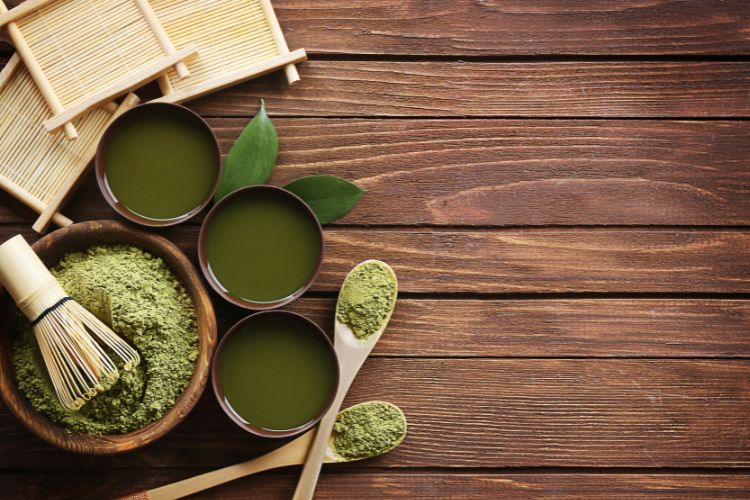Can Expired Matcha Make You Sick?
You picked up that tin of matcha a while ago, used it once, then tucked it into the back of the cupboard behind the herbal teas and forgotten spices.
Now you’re eyeing it again, wondering: Can expired matcha make you sick? The expiration date passed months ago, but the container looks sealed. It doesn’t smell awful.
Still, something feels off. Matcha doesn’t spoil the way milk or bread does, but that doesn’t mean it’s harmless. When light, air, or humidity sneak in, things start to shift—flavor, color, and even safety. What looks fine at first glance might not be.
Before you whisk up that latte, it’s worth checking what’s actually in the tin. The answer depends on how it was stored, how long it’s been sitting, and what signs you might be missing.
What Does “Expired” Actually Mean?
When it comes to matcha, “expired” doesn’t mean it’s rotting. It means it’s probably past its prime.
Matcha powder isn’t like milk or meat—it won’t curdle or grow legs overnight. However, its flavor, potency, and health benefits can fade fast, especially if the storage conditions weren’t ideal.
That “best before” or expiration date on the label? It’s more about freshness and nutrient quality than hard safety rules.
There’s also a difference in how long different types last:
- Ceremonial grade (the premium, drink-it-as-is kind): best within 1–2 months after opening.
- Culinary grade (for baking or mixing): holds up a bit longer—closer to 2–4 months if kept properly.
That’s assuming you’re storing it right (more on that later). Left exposed to heat, air, or humidity, even fresh matcha powder can go downhill quickly. The bright green color dulls, the smell gets dusty, and that antioxidant kick? Mostly gone.
So while old matcha won’t always make you sick, it can lose the very things that made you buy it in the first place.

Can Expired Matcha Make You Sick?
Drinking expired matcha probably won’t send you running to the ER—but it is possible, depending on how it’s been stored.
If your matcha is just old, it’ll taste dull and feel flat. That’s stale. Annoying? Sure. Dangerous? Usually not. However, if it’s been sitting in a warm, humid place with exposure to oxygen, it’s a different story.
Moisture invites bacteria. Humidity encourages mold. Add a bit of time, and you’ve got a real shot at contamination.
Here’s when expired matcha can make you sick:
- It smells sour, musty, or sharp.
- It clumps in strange ways, like it’s wet.
- You see fuzzy patches or discoloration (yes, that’s mold).
- It’s been kept in a non-airtight container in a steamy kitchen or near the stove.
And if you ignore those signs?
You risk food poisoning, especially if bacterial contamination is involved. Nausea, stomach pain, headaches—none of it is worth a questionable cup.
Bottom line: stale matcha is one thing. Spoiled matcha is something else. When in doubt, toss it.
How to Tell If Matcha Has Gone Bad
Again, if stored properly, expired matcha probably isn’t dangerous. But it’s definitely not enjoyable. A quick visual inspection and a good sniff can tell you most of what you need to know.
Fresh matcha should look bright and vibrant, almost electric green. It should smell grassy, clean, and a little sweet.
The texture should be fine and silky, not gritty or damp. If you’re dealing with the opposite, you might want to skip that latte.
Check for these red flags:
- Dull or brownish color instead of that sharp green
- Sour, musty, or fishy aroma (this usually signals spoilage or old oils)
- Lumps that won’t break apart easily—especially if they feel sticky or damp
- Visible mold or strange clumps stuck to the edges of the tin
- A weird texture, like it’s slightly wet or clumpy
Foul odors are a dead giveaway. If it smells off, don’t even bother tasting it. If you do give it a tiny sip and the taste is bitter in a sharp, chemical way rather than earthy and smooth—that’s another warning.
When it comes to freshness, trust your senses. If it doesn’t look or smell right, it probably isn’t.
How to Store Matcha the Right Way
A good batch of matcha can go bad fast if you’re not storing it properly. The difference between a bright, flavorful scoop and a dull, lifeless one usually comes down to light, air, and heat. Here’s how to keep it fresh for longer.
Keep It Cool, Dark, and Airtight
Matcha isn’t built for room temperature shelves or direct sunlight. It’s extremely sensitive to light and air, which makes it more fragile than your average loose-leaf tea.
Leave it exposed, and you’ll start to notice the color fading and the flavor going flat.
The ideal storage method is simple: keep your Matcha in a dry place, away from heat sources, in an opaque container that blocks light. Bonus points if the lid seals tightly and doesn’t let in air.
Consider Refrigeration, but With Care
If you’re not finishing the tin within a few weeks, refrigeration can help slow down oxidation. However, there’s a catch: Matcha is easily affected by moisture.

That means opening a cold tin can cause condensation, which leads to clumping or, worse, spoilage. Always let the tin come to room temperature before scooping.
Don’t leave it sitting open in the fridge. A tightly sealed container is non-negotiable. And no, the original pouch with a fold-over top doesn’t count!
Don’t Treat All Teas the Same
Green tea powder, like matcha, is far more delicate than other types. Oolong teas, white tea, and loose-leaf tea hold up better over time, and black tea or herbal teas are even more forgiving.
Still, none of them benefit from moisture, sunlight, or warm cabinets.
Matcha deserves a little extra attention. A few smart storage techniques—like using the right container and keeping it away from heat—can make all the difference between a great cup and a wasted one.
The Final Scoop
So, can expired matcha make you sick? Sometimes. If it’s been sitting in a warm, humid spot or left open in a loose container, there’s a real risk.
However, if it still has its bright color, grassy scent, and smooth feel, it might just be stale. Use a quick smell/taste test, check for freshness, and don’t second-guess mold or off smells.
When in doubt, toss it.
And next time? A little care with storage goes a long way. Keep your matcha sealed, cool, and dry—and it’ll treat you better in every cup.


